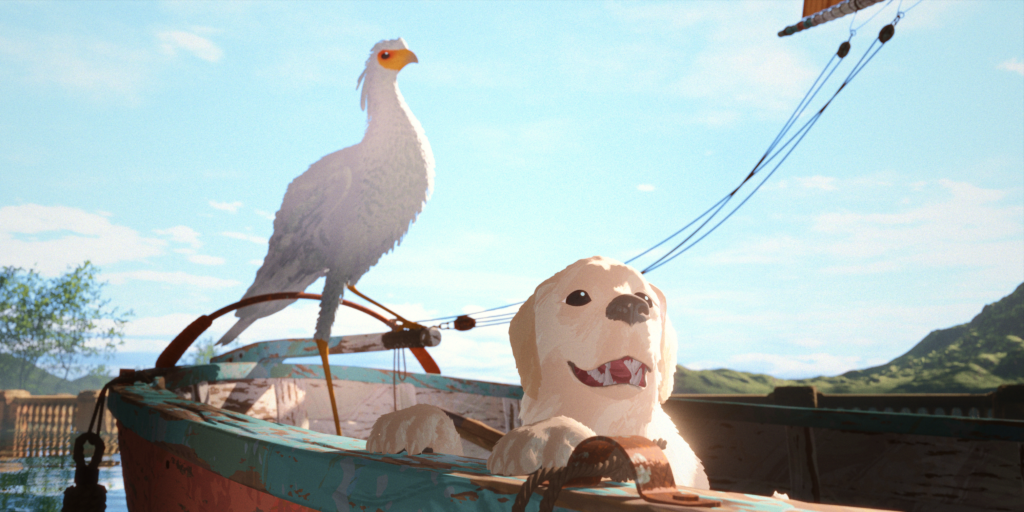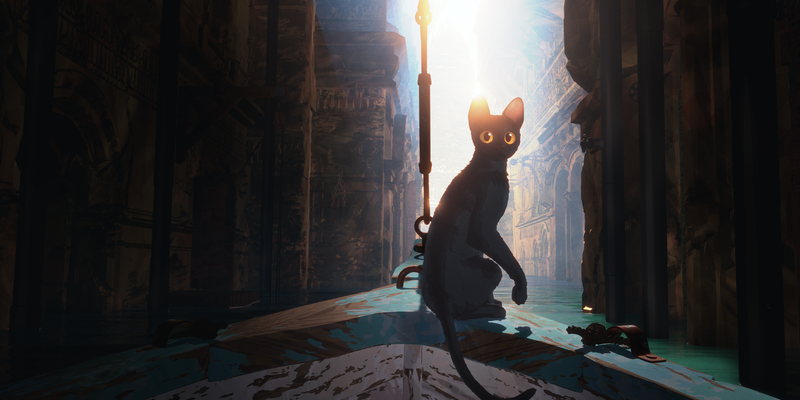Flow’s victory in this year’s Academy Awards Animated Film category came as no surprise.

It was the only animated film in a category, which included Inside Out 2, I Robot and Memoir of a Snail, to also be nominated in the Best International Film category. Its win marks the first Academy Award win by a Latvian – Gints Zilbalodis.
Flow tells of a cat and a group of other animals who survive a cataclysmic flood. Unlike many animal-based animations there’s no dialogue. The story is told through animation produced entirely with Blender, free and open source 3D software, and music. And there are no humans.

The cat, whose name or sex is unknown given the lack of dialogue, is a solitary animal who ends up on a sailboat after devastating floods destroy the surrounding countryside.
Once on the sailboat the cat first meets a capybara who initially looks a little concerned but then falls asleep – which turns out to be a regular occurrence.
Other animals to join the journey include an enthusiastic labrador (who earlier in the film was part of a dog pack menacing the cat), a lemur who hoards bright and shiny discarded trinkets and a very tall secretary bird.
Together they sail through decimated flat land, mountain tops-turned-islands and an abandoned, but obviously once grand, city with rivers for streets. The only inhabitant is a huge whale who the group see on several occasions.

Their journey also brings them in contact with others in their species who don’t always have the same spirit of co-operation or friendship as our boat buddies.
Together with the flood they also face the challenge of powerful storms with the cat especially ending up in the water on numerous occasions. The reason for the flood is never spelt out for a reason.
As Zilbalodis explains: “I’m not interested in making a puzzle that the audience has to solve. Flow is not about finding out the meaning, it’s about embracing the whole experience.”
That experience contains such underlying ‘life messages’ as empathy, the importance of working together, finding a group where you belong and protecting that group even if at times they annoy you.

As well as providing numerous life messages the other delight of Flow is its computer generated animation.
The attention to detail is amazing and it comes as no surprise to learn Zilbalodis and his team watched hundreds of videos depicting the body language and behaviour of the animals featured. Anyone with a labrador or cat will instantly recognise many of their behaviours. Real animal sounds are used so dogs barking or the cat meowing sounds true to life.
This was part of Zilbalodis’ plan to make the animals behave mostly as real animals do.
“Of course, there are also some artistic liberties, at one point, the cat is attempting to steer the boat, which I guess would not happen in reality!,” he explains.

“But we tried to make the animals movements as plausible as possible. We wanted to avoid showing animals behaving like humans or have them think the way humans do.
“The characters’ goals are primal and very simple, which is necessary, since we do not use dialogues. But although the characters have simple goals, it does not mean they are less deep, less significant.”
As well as the lack of dialogue another unique aspect of Flow is the lack of an evil character – in line with Zilbaldois’ wish not to have a villain or antagonist in a film.
As a result of the story, the underlying messages, the animation and a running time of just 84 minutes Flow has plenty to offer both youngsters and their parents.
Flow opens in cinemas around Australia on March 20.
- movie, reviews
Subscribe My Newsletter
Unsubscribe at any time.




